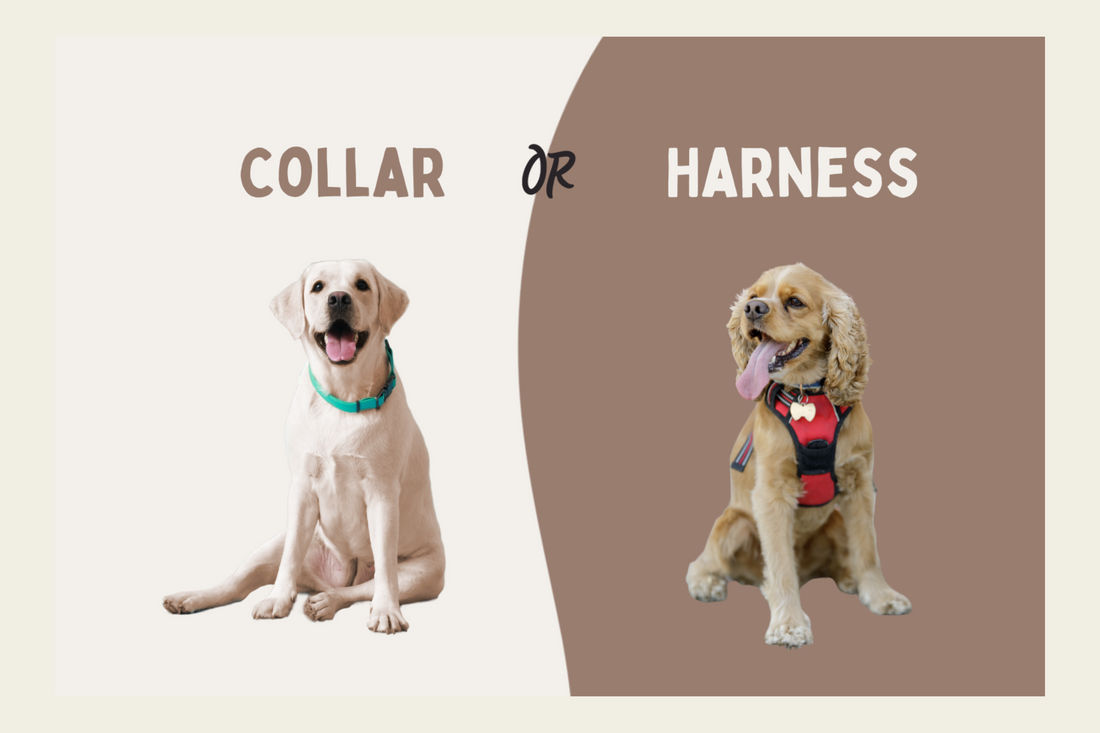
Harness vs Collar: Which Is Better?
When it comes to walking your dog, one of the biggest decisions you’ll make is choosing between a dog harness and a dog collar. Both have their pros and cons, and choosing the right option can make walks safer, more comfortable, and more enjoyable for you and your pup.
In this blog, we’ll dive into the benefits and drawbacks of dog harnesses vs dog collars, and help you decide which one is right for your furry friend.
Dog Harnesses
Dog harnesses have become increasingly popular — and for good reason. A harness wraps around your dog’s body, distributing pressure more evenly than a collar.
Pros of Dog Harnesses
- Reduces neck strain
Harnesses are ideal for dogs who pull on the leash, as they prevent pressure on the throat and neck — which is especially important for smaller breeds or dogs with respiratory issues.
- Better control on walks
A harness gives you more control, especially if your dog is strong, excitable, or still learning to walk on a leash.
- Discourages pulling
Front-clip harnesses are great for leash training and can help reduce pulling by redirecting your dog’s movement.
- Escape-proof
Harnesses are harder to slip out of, which is a big plus for nervous or wiggly dogs.
Cons of Dog Harnesses
- More complex to fit
Harnesses often have multiple straps and clips, which can be tricky to adjust properly — especially for first-time users.
- Takes time to get used to
Some dogs may initially resist wearing a harness or feel restricted until they’re used to it.
- Not meant for all-day wear
Wearing a harness all day can cause chafing or rubbing, especially in warmer weather or on dogs with sensitive skin.
Dog Collars
Dog collars are the classic choice — they’re simple, functional, and familiar to most dogs. But they’re not always the best option for walking, especially for certain breeds or behaviours.
Pros of Dog Collars
- Quick and convenient
Easy to slip on and off, collars are great for everyday use and holding ID tags.
- Lightweight and comfortable
Dogs usually adjust to wearing a collar quickly and can comfortably wear one all day.
- Great for calm walkers
For dogs that don’t pull or lunge, collars are a low-maintenance and effective option for casual walks.
Cons of Dog Collars
- Can cause neck injuries
Collars put direct pressure on the neck, which can be harmful for dogs that pull or lunge — and even more risky for dogs with medical conditions like collapsed trachea.
- Easier to escape from
Dogs with narrow heads or those that back out of collars can slip away, which can be dangerous in busy areas.
- Not ideal for training
Collars offer less control than harnesses, making them less suitable for leash training or behaviour correction.
So, Which Is Better: A Dog Harness or Collar?
Here’s the truth — there’s no one-size-fits-all answer.
The best walking gear for your dog depends on their breed, size, temperament, and any health considerations. In fact, many dog parents use both: a harness for walking and a collar for ID tags and casual wear.
At Barkinabout, We Believe in What’s Best for Your Dog
We know first-hand how important it is to choose products that are not only functional but also safe and comfortable. Our collars and harnesses are designed with both style and safety in mind — helping you walk with confidence while making a difference in the lives of rescue dogs, too.
Here’s how we give back with every purchase:
- 5% of every order is donated to local shelters and rescues
- This 5% helps to contribute towards food, medical care, and support for dogs in need
- We raise awareness for the role dogs play in supporting mental health
- We celebrate the bond between people and their pups — every single day
So whether you’re team harness, team collar, or a bit of both — we’ve got your dog covered.
